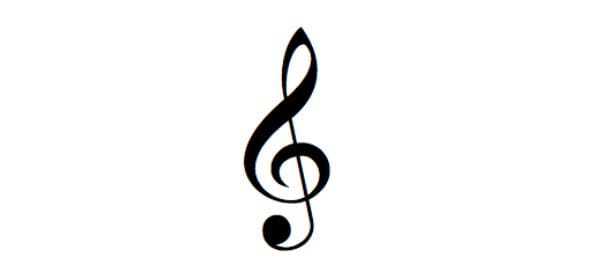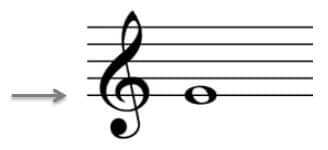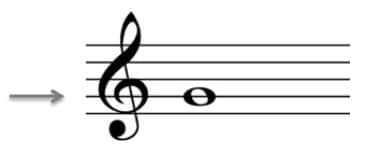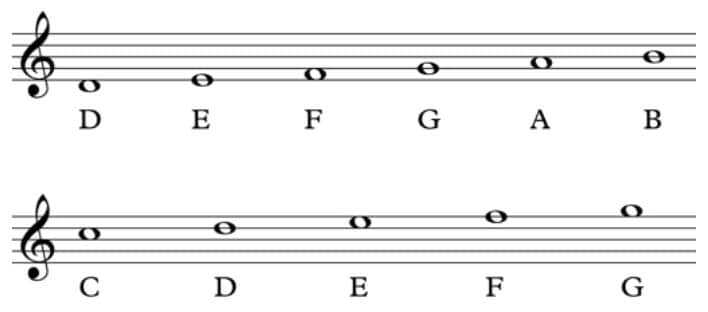So how can the staff of only 5 lines and 4 spaces be used to represent all the notes that we can hear in music? Whether we listen to classical, rock, pop, jazz, hip-hop, etc. there are pitches that are very high and other pitches that are very low. How do the staff and a few ledger lines manage all that?
The answer is in the clef
.
The clef (from Latin, clavis
meaning a key) is a symbol that tells us which ranges of notes are going to be represented on that particular staff.
There have been numerous clefs that were used throughout the history of music but the most common nowadays are two: the bass clef
for low notes and the treble clef
for higher notes.
Without a clef, we wouldn’t be able to identify which note is which.
Without a clef, written musical notes cannot be named.
And because of this, the clef is the first symbol to be placed on the staff.
The Treble Clef
The clef that is most used in our times is the treble clef:
The treble clef is used for notes that are relatively high. Originally it was part of a group of clefs known as the G clefs
. They were called so because their job was to designate where the note G is
on the staff and this depended on where exactly the clef was drawn.
For example, if the G
clef was drawn starting from the first (the lowest) line:
Then the note on that line itself becomes the note G
(specifically G4
in SPN). Once we’ve determined where G
is, we can work out what the other notes are, by counting up and down the musical alphabet.
The G clef that we are familiar with today is the treble clef
and it indicates that the note G is on the 2
nd
line of the staff.
The treble clef and the note G
And so the notes on the treble clef are:
Notes on the treble clef, from D to G





